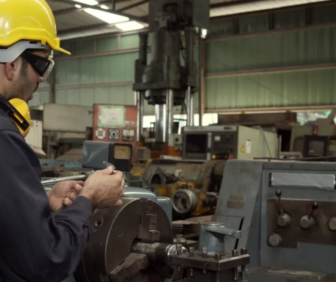Two weeks ago on this blog, Lou wrote about some new job projections for 2016-2026 from the Bureau of Labor ![]() Statistics (BLS). BLS data show that job growth between now and 2026 is going to be clustered at either end of the education spectrum: 47 percent of job growth will be in jobs requiring a high school degree or less, and 36.5 percent of jobs will require a college degree or more. Only 16.5 percent of jobs will be in occupations that require some post-secondary training or an associate degree. Part of why this is so vital to understand is that jobs that don’t require more than a high school degree, not surprisingly, don’t pay well (in fact, they pay annually far less than the $56,064 that the United Way’s ALICE report calculates is a “household supporting wage”). With these low-income prospects in mind if a young person stops after high school, many leaders in Michigan—in education and other fields—are pushing kids toward post-secondary certificates and associate degrees. Unfortunately, the BLS data show that those young people, if successful, will end up fighting it out for new jobs that don’t exist—and many will end up in jobs that require even less skill and offer lower pay.
Statistics (BLS). BLS data show that job growth between now and 2026 is going to be clustered at either end of the education spectrum: 47 percent of job growth will be in jobs requiring a high school degree or less, and 36.5 percent of jobs will require a college degree or more. Only 16.5 percent of jobs will be in occupations that require some post-secondary training or an associate degree. Part of why this is so vital to understand is that jobs that don’t require more than a high school degree, not surprisingly, don’t pay well (in fact, they pay annually far less than the $56,064 that the United Way’s ALICE report calculates is a “household supporting wage”). With these low-income prospects in mind if a young person stops after high school, many leaders in Michigan—in education and other fields—are pushing kids toward post-secondary certificates and associate degrees. Unfortunately, the BLS data show that those young people, if successful, will end up fighting it out for new jobs that don’t exist—and many will end up in jobs that require even less skill and offer lower pay.
I wanted to look at the new BLS occupational data and apply it to Michigan specifically to make a few more guesses about how our state’s job opportunities will change over the next decade. (Because this is a blog post and not a term paper, I’ve made a few methodologically questionable choices in my analysis, but I’m just trying to get a general picture, so I hope the data nerds out there will please forgive me.)
The ALICE report for 2015 data listed the top 20 most common occupations in Michigan. I used this list as my way into this data. I pulled the expected national growth rates from the BLS data for each of these occupations and applied them to the number of jobs in 2015 in Michigan (essentially pretending that 2015 and 2016 numbers are the same). Then I organized the spreadsheet in different ways—by the usual education requirement, by median income, and by the growth rate. What I found is stark confirmation that we need to stop planning Michigan’s future as though it’s going to look like our past. Here are a few of the things that jumped out at me.
Four of Michigan’s top occupations have negative growth. Three of these occupations are actually listed on the BLS list of “fastest declining occupations.” These are all occupations that don’t require more than a high school degree. In 2015, we had 104,210 team assemblers. In 2026, if you apply the national growth rate, we will only have 91,080.
Only four of Michigan’s top occupations pay a median wage that is close to or above the ALICE “household supporting wage.” I really like this figure because we should be aiming for prosperity—not just for families to live slightly above poverty. Surprise, surprise: all four of these occupations require a bachelor’s degree. Also, all four of these occupations are growing at or above the national occupational growth rate issued by BLS (7.4 percent over the decade).
When I added up the job growth—just out of the top 20 occupations in Michigan—in each educational category, I found that jobs requiring a college degree will grow by 11.0 percent, jobs requiring a high school degree or less will grow by 9.0 percent, and jobs “in-between” will grow by only 4.4 percent. Again, this is only looking at those top 20 occupations—but it mirrors the national figures. The job growth for these occupations, overall, is concentrated in high-skill, high-wage and low-skill, low-wage occupations. Not in the middle-skill and middle-income. (Though let’s be honest: the middle-skill jobs in Michigan aren’t paying a household supporting wage, and one can imagine they will pay even less, relatively, if there are more applicants vying for them.)
This data paints the picture that our policy agenda is trying to respond to. We need to make college education a possibility for far more of our kids; we need to support the vast numbers of people who are going to be working low-wage jobs so that they aren’t living in poverty; and we need to support the creation of communities that can attract talented workers to drive the economy.
If we want Michigan households to grow in prosperity, there are so many things we need to do differently. And we need to start by realizing that the future won’t look like the past—or even the present.







